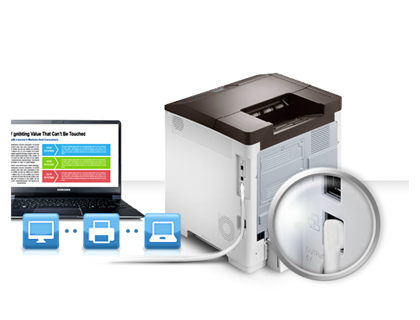How to reduce the workload on your printers and streamline company productivity
With the UK’s economic recovery only gathering pace slowly, companies are still looking for ways they can squeeze every pound out of the business and steal a march on their rivals.
Waste is the enemy of firms in the 21st century and most organisations are now switched on to the fact they need to improve efficiency in order to see a major difference on their bottom lines.
IT strategies are often among those that come under the microscope when looking for waste and this is partly because technology moves on so quickly, devices rapidly become obsolete.
As well as upgrades and new products meaning computers, ID card printers and various other accessories get out of date swiftly, the latest gadgets tend to be more energy efficient and with business electricity bills so high, this is another important consideration for companies in 2013.
One way a lot of firms are looking into reducing waste is through the use of managed print services, which enables them to see where inefficiency is happening in their printing strategy and implement changes to cut needless spending.
How does managed print services work?
Managed print services can help organisations to cut the amount of money they spend on their printing processes by around 30 per cent – making a massive difference to firms that are still trying to bounce back from the effects of the recession.
By embarking on a thorough consultation process, an analysis of specific business needs is carried out and the current printing setup is assessed to see if it is meeting requirements.
Through the managed print services plan, companies are able to learn all about their optimal printing and document workflow solution, in turn resulting in cuts to total printing costs.
The continual management, review and implementation process means that organisations keep pace with the required changes from the top of the firm to the bottom, with all members of staff buying in to the new plan in order to cut waste, boost productivity and eliminate inefficiency.
Environmental impact of printing
Companies are increasingly realising how vital it is that they consider the environment across all of their practices and printing is no different.
While firms will usually have some form of recycling policy this is only really the tip of the iceberg and businesses can and ought to be doing a lot more to help protect the environment.
By reducing the amount of devices such as printers that are running in the office, a company is able to cut its business electricity usage, reducing bills and helping the planet in the long run.
Businesses that are evidently doing their bit are also more likely to attract customers who are worried about issues such as their carbon footprint, so this can also be a good move financially.
Managed print services helps to eliminate waste, having a positive impact on the environment as a result, as well the efficiency and bottom line of an organisation.
Boosting productivity through workflow changes
One of the factors examined through the managed print services process is wastage within workflow, which can cost members of staff time, and therefore money to the firm.
If employees are finding printers are not working as efficiently as they could be, this is going to result in them losing out on time they could be using to be more productive in their jobs.
Through managed print services, these issues can be highlighted and then tackled, making sure staff members are able to concentrate fully on their daily tasks.
With managed print services plans able to save companies 30 per cent from their printing bills, it is likely this tactic is going to become even more popular among firms in the near future.





